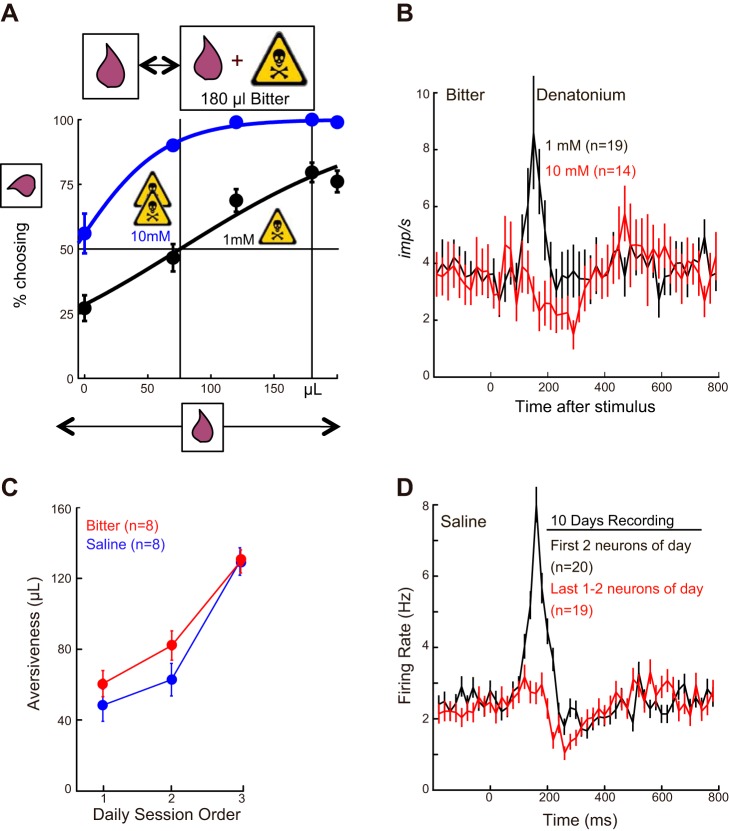FIGURE 11.
No aversive coding in monkey dopamine activations. A: psychophysical assessment of aversiveness of bitter solution (denatonium) as prerequisite for investigating quantitative neuronal processing of aversiveness. Monkey chose between single juice reward and juice reward + denatonium (top). The blue and black psychophysics curves show that increasing the volume of single juice reward induces more frequent choices of this reward against constant alternative juice + denatonium. Aversiveness of denatonium is expressed as difference between volume of single juice and juice together with denatonium at choice indifference (50% choice). Thus 1 mM denatonium is worth −100 μl of juice (black), and 10 mM denatonium is worth −180 μl (blue). The x-axis shows volume of single juice, and y-axis shows percent of choices of single juice. B: inverse relationship of neuronal activations to psychophysically quantified aversiveness of bitter solutions (behavioral method shown in A). N = number of neurons. Imp/s indicate firing rate. C: development of behavioral aversiveness of solutions within individual test days, as assessed with method shown in A. Liquid solutions of salt or bitter molecules lose reward value through gradual satiation and thus become increasingly aversive (thirsty monkeys work for mildly “aversive” saline solutions, and thus find them rewarding, as outcome value is dominated by liquid over salt). D: decreasing dopamine activations with increasing aversiveness of saline solution within individual test days (behavioral aversiveness assessment shown in C), suggesting subtraction of negative aversive value from gradually declining juice value due to satiation. [A–D are from Fiorillo et al. (160).]

